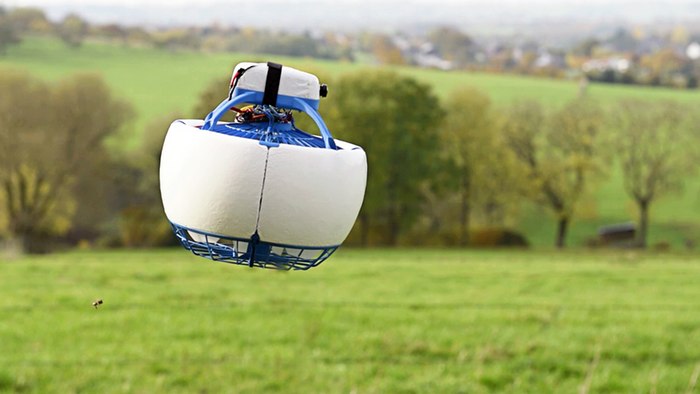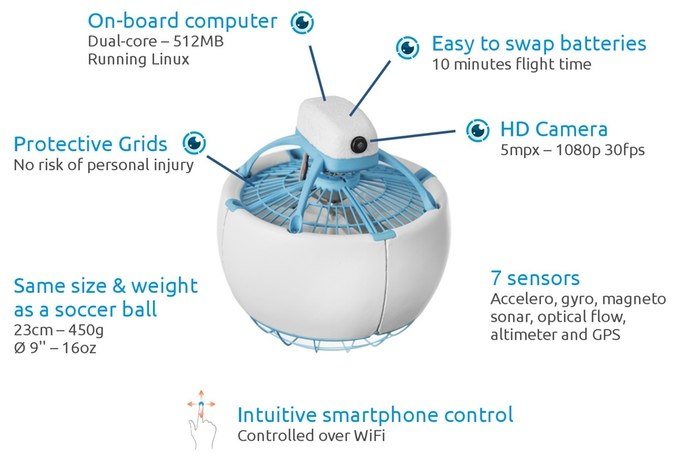Belgium startup, Fleye, is developing an autonomous drone, and it’s preparing for lift-off. So what’s so special about yet another unmanned aerial vehicle (UAV)? Well, even though it looks like a flying soccer ball, the Fleye is billed to be the world’s safest drone.

The Fleye’s round shape, SDK, and API make it the safest drone you could operate. Source: Fleye.
Though its shape is designed to keep all the moving parts out of harm’s way while also making it more resistant to crash damage, it’s not just the design that sets the Fleye apart. A dual core Linux brain with an open software development kit (SDK) and application program interface (API) make this little machine less like a conventional drone and more like a flying development platform.
To get the Fleye to fly, its development team took to Kickstarter in order to launch the project. While its standard specs, such as its 1080p/30 fps camera and 10-minute flight time, aren’t exciting, that’s not the most interesting part of this small beast.

The Fleye includes seven different sensors, an on-board computer, and protective grids to protect against personal injury. Source: Fleye.
The Fleye’s design takes a cue from industrial and defense UAVs, relying on what’s called a “ducted fan” concept. Unlike other drones on the market that have multiple rotors, the Fleye’s lift is generated by a single shielded propeller with four control vanes to provide directional control. What this means is that users can safely push it, touch it, hold it, or even bump into it without worrying about being injured by a spinning prop.
Compatible with an iOS or Android app, the Fleye sports an array of sensors including an accelerometer, gyroscope, altimeter, GPS, sonar, optical flow, and magnetometer. This drone is ready from the get-go to track you, snap 360-degree photos, or fly any other type of autonomous missions with the press of an icon.
Although the Fleye’s simplicity makes it user-friendly for just about anyone, it’s built to be hacked, and developers who want to get busy tinkering with small flying robots are who Fleye is targeting.
“A machine becomes a robot when it is capable of observing its environment and taking autonomous decision based on what it sees,” the company stated. “This is exactly what you can do with Fleye. You can write on-board applications that leverage the camera feed, perform computer vision tasks and control the drone based on the content of the image. Fleye runs Linux and supports OpenCV, a popular computer vision library.”
Source: Fleye
Advertisement
Learn more about Electronic Products Magazine





